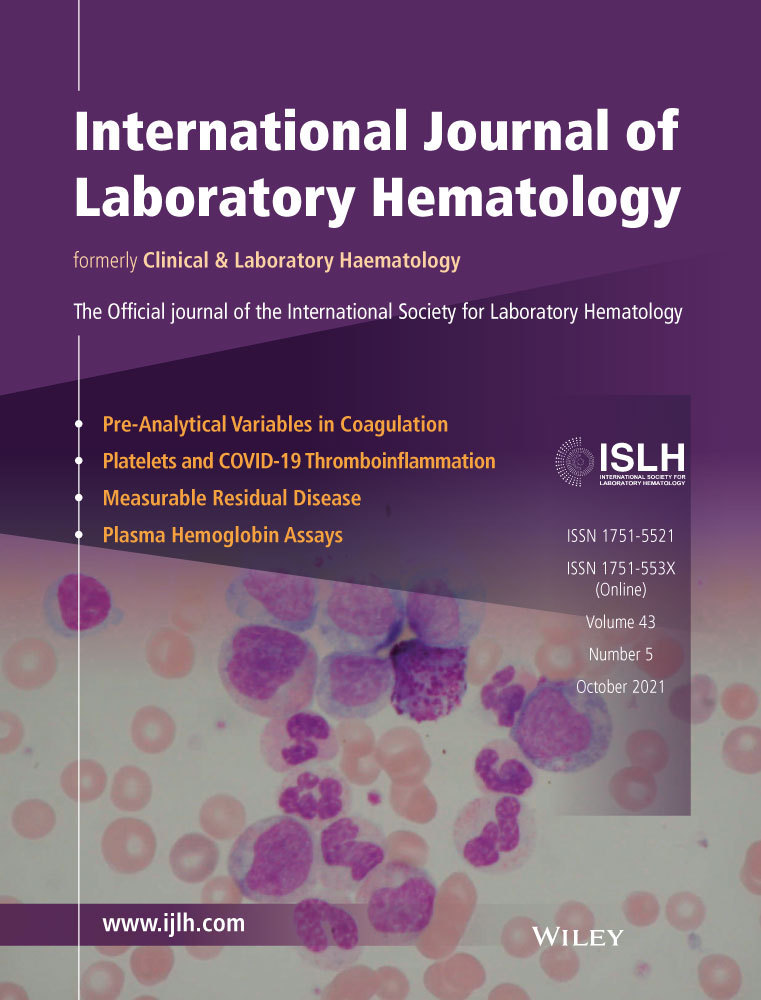Reference intervals of white blood cell parameters for healthy adults in japan
Funding information
AT: Ministry of Education, Culture, Sports and Technology of Japan (#18K08343); Ministry of Health, Labour and Welfare of Japan.
Role of the Funder/Sponsor: The funders played no role in the study design, data collection, and analysis, the decision to publish or the preparation of the manuscript.
Abstract
Introduction
While white blood cell (WBC) parameters have been suggested to depend on ethnicity and gender, reference intervals in healthy Asian populations are limited. The present study established reference intervals of WBC parameters for healthy adults in Japan.
Methods
A total of 750 healthy adults (447 women and 303 men; 18-67 years old, median 40 years old) at 7 Japanese centers who participated in regular medical checkups entered this study. The WBC parameters were measured using automated hematocytometers and blood film reviews by a manual microscopic examination.
Results
The reference intervals of the WBC parameters according to gender in healthy adults were determined. Age-specific decreases in WBC counts of both gender groups and in neutrophil counts of women were noted. Favorable correlations between the hematocytometer and microscopic methods were found in neutrophils, lymphocytes, and eosinophils but not in monocytes or basophils.
Conclusion
This study suggests the need to consider gender and age in the clinical use of reference intervals of WBC parameters.
CONFLICT OF INTEREST
The authors declare no conflicts of interest in association with the present study. JSLH declares that the Society itself was supported for funding partly by Sysmex Corporation, Siemens, Abbott Laboratories, Beckman Coulter Inc., Nihon Kohden and HORIBA Medical.
Open Research
DATA AVAILABILITY STATEMENT
The data that support the findings of this study are available on request from the corresponding author. The data are not publicly available due to privacy or ethical restrictions.




